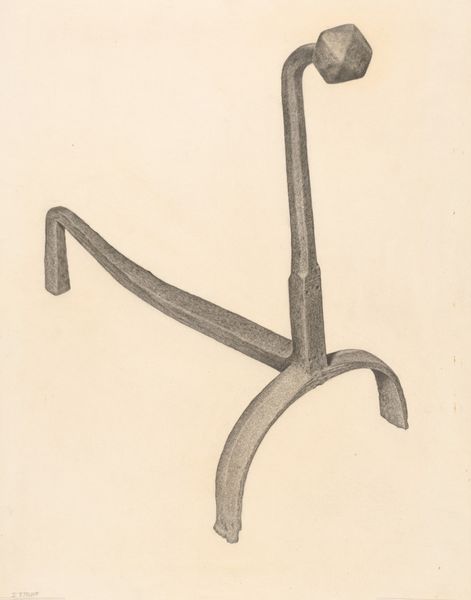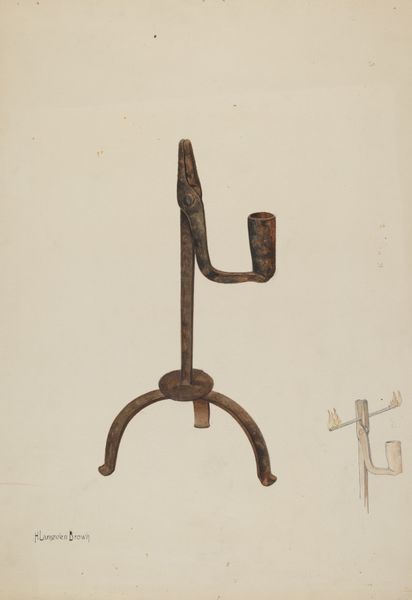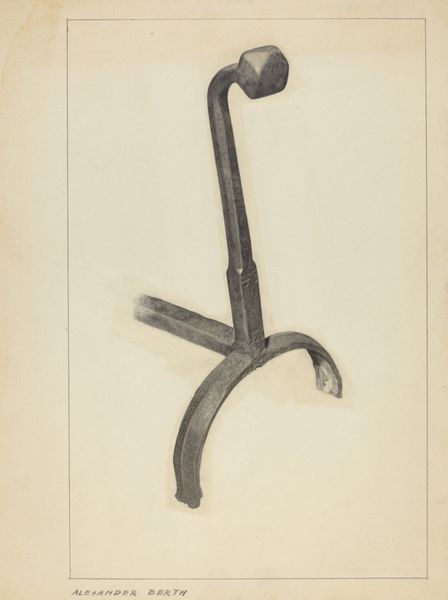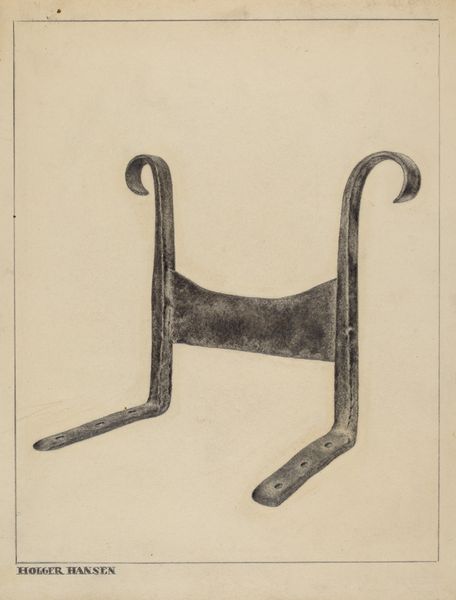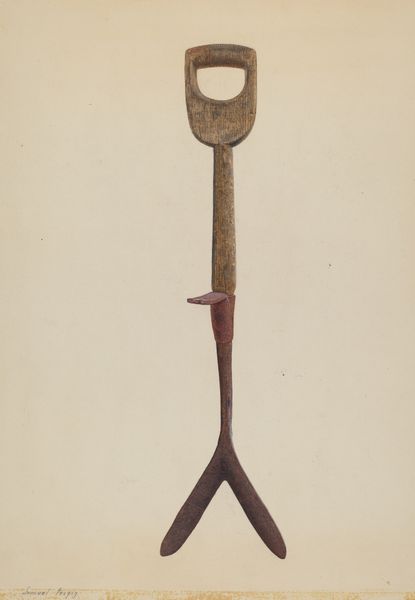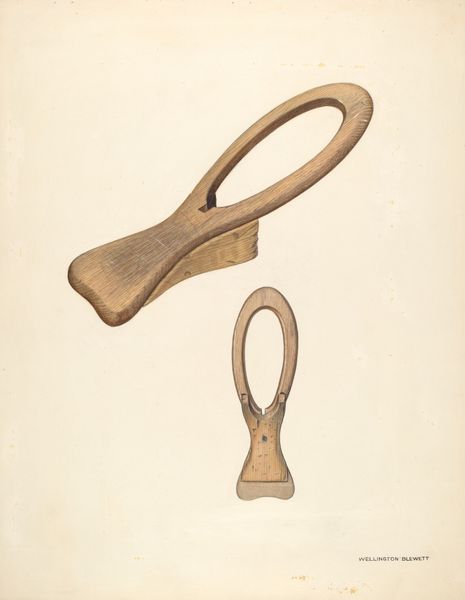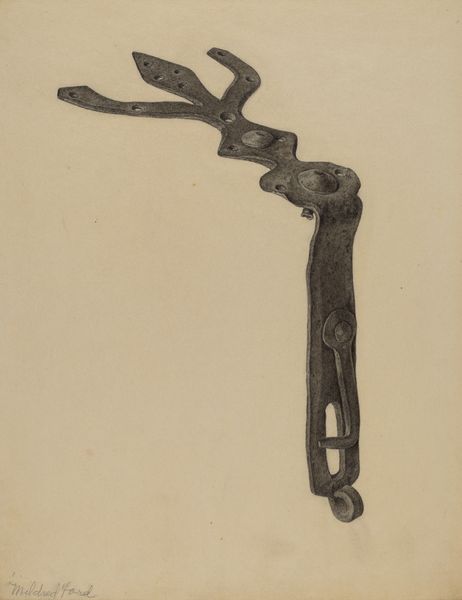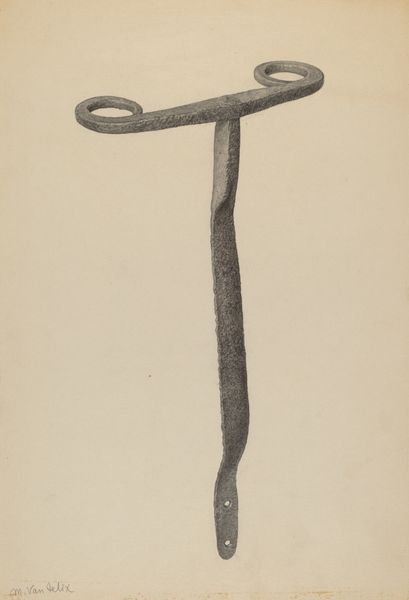
drawing, watercolor
#
drawing
#
watercolor
#
watercolour illustration
#
realism
Dimensions: overall: 57.4 x 36.2 cm (22 5/8 x 14 1/4 in.)
Copyright: National Gallery of Art: CC0 1.0
Editor: Here we have Eugene Bartz's "Clamp Jack," painted around 1937 using watercolor and drawing. The depiction of this wooden tool, this object of labor, has a strangely monumental feel. What strikes you about it? Curator: It’s fascinating how Bartz elevates this utilitarian object. What we see is not just a clamp jack, but an index of labor. The tool itself becomes a record of use, a testament to the act of making and its place in the American economy. How does its depiction, specifically rendered through drawing and watercolor, complicate the value typically assigned to fine art versus craft? Editor: I see what you mean. The choice of watercolor, often considered a delicate medium, feels like an interesting contrast to the sturdy, practical nature of the clamp jack. Does that medium itself imply any intended reevaluation of manual labor? Curator: Absolutely! By employing a medium like watercolor, which historically might have been relegated to preliminary sketches or "lesser" artistic endeavors, Bartz interrogates the established hierarchy between art and craft. This tool is usually hidden, backstage so to speak. Presenting it in such a delicate manner encourages the viewer to confront the process of its creation and how that process translates to economic value during the 1930s. Think about it as an attempt to visually challenge how things are made, consumed, and valued during this period. Editor: So it's almost a commentary on the dignity of labor through the very materials used to depict it. Thanks, that’s really insightful! Curator: Indeed, we come to appreciate the object in a completely new light through Bartz’s lens. It’s a poignant statement on how labor, materiality, and art intersect, challenging established norms and prompting further reflection.
Comments
No comments
Be the first to comment and join the conversation on the ultimate creative platform.


